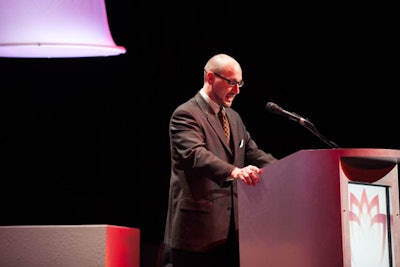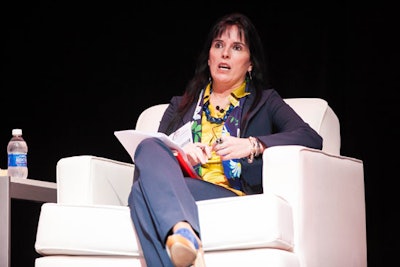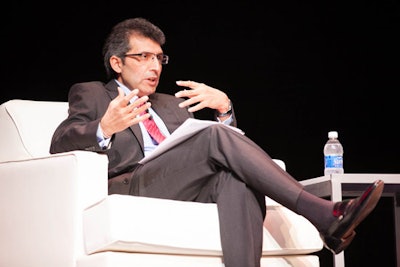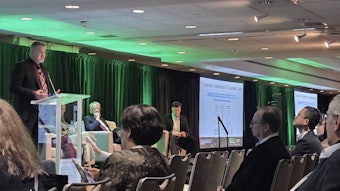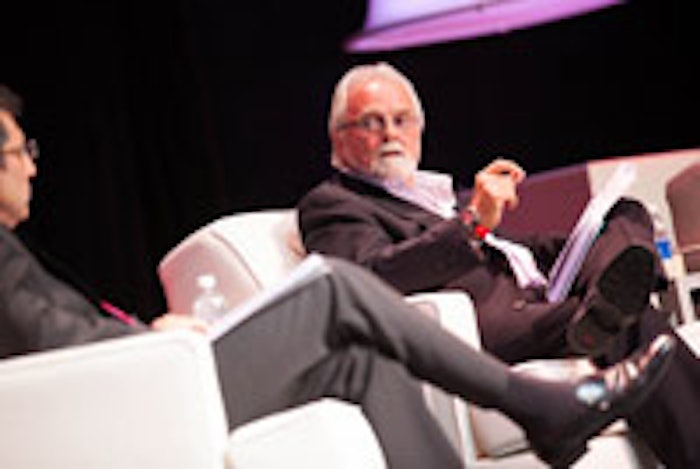
This article originally ran in the September 2012 issue of Perfumer & Flavorist magazine. All rights reserved.
Fragrance is a key motivator for the first and subsequent purchases of many products, noted Marcella Bartoletti, global fragrance strategist for MABA, during a consumer packaged goods (CPG) panel at the 2012 World Perfumery Congress that was moderated by Jeff Falk, editor in chief, GCI magazine. “It is the emotional signature of a brand,” she added, noting that fragrances tell brand stories and fulfill their promise. Recognition of a scent’s importance has dovetailed with a growing emphasis on emotional marketing, which centers on the value of consumer experience. If fragrance suppliers and their customers execute properly, Bartoletti said, it will lead into a long-term success with the consumer and create new icons for the future. Doing it wrong, she concluded, will create a consumer disconnect.
The design equity and context of brands is much more focused on fragrance identity, added Sumit Bhasin, director, global innovation, P&G Prestige. Les Smith, senior vice president of research and development for Coty, added that often there is an inverse relationship between a product’s level of functionality and the emotional facet of brand identity. To the far end of the emotional side, he explained, fine fragrance is nonfunctional. Among more functional categories, Smith said, it is well-worth fragrance suppliers’ time to better understand the functional abilities of products in order to support them olfactorily. As Bartoletti noted, fragrance can boost perception of functionality.
Changing Fragrance Markets and Habits
Fragrance habits are changing, explained Bhasin, adding that trends are more fluid with the influence of social media and travel. Among opportunities created by changing habits, he said, is that many Asian consumers who currently buy fragrance primarily for gifts may be motivated to incorporate fragrance into their own daily beauty regimens.
Smith warned that the areas of rapid development—Brazil, Russia, India, China and Korea—are well on their way to market saturation, driven in part by digital connectivity. Big brands conceived for the world will work, he said, but if they feel ‘local’ they may not resonate globally. Many of today’s brands focus on local resonance, including forging connections with local celebrities. The juice sells the product, ultimately, said Smith, and so modifications can be made for local consumers.
“The consumer is always the ultimate nose,” added Bartoletti. Consumers’ preferences are shaped by habits and climate and social conditions, so it’s important to design with the end in mind,” she added.
Economic Impact on Launches
Low consumer confidence in many geographic regions has reshaped consumer expectations of brands, said Bartoletti. Even in this challenging climate, she noted, beauty products have a special allure due to their focus on aspirational aspects of affordable luxury.
Even with the recent global economic difficulties, said Smith, about 1,200 fragrances were launched in 2011. “It’s an astonishing number,” he said. “I don’t personally know the ‘hit’ rate of these products.” He added that the objectives of launches are different than they were even a few years ago. Many companies are still looking to launch a classic that will sell for 50 years, but brands are managed with a reduced life expectancy. Classics will be supported but not expected.
“This is a never-ending question for our industry,” said Bhasin. “The price of entry is relatively low, so you get brand proliferation.” Over time, he explained, the way in which classics are sustained will change. Rather than building off line extensions, there will be more of a system of “classic support.” Meanwhile, he said, segmentation is going to play a very big role in terms of territories that particular brands can own. The market’s tail is very long, he concluded, but the top 50 or 60 scents are very clearly defined.
Smith added that consumers shop in different tiers and so manufacturers have created brands to reach various levels. Ultra prestige, he said, is recession-proof.
No matter the category, Bhasin said, “Establishing a trust the consumer can have with a brand is crucial.” He called for a reexamination of the meaning of “value.” Consumers are demanding more value out of products, he explained, and there is no willingness to compromise, even in mass categories.
CPG-fragrance House Relationships
“The traditional supplier-customer model has changed dramatically,” said Bhasin. “It’s really a partnership. Today you’re looking to develop win-win solutions and making sure you don’t duplicate work.” In managing the value equation, CPGs are contending with ever greater sustainability and technical demands, he added, and so the old reactive model of the traditional briefing process is no longer sufficient. Moving forward, CPGs and fragrance suppliers will move toward co-innovation, developing solutions together.
Core fragrance supplier contracts have become increasingly elaborate and are now formally legally binding, a drastic evolution from mere letters of understanding, said Smith. “This leads to very intimate relationships … with smaller and smaller groups of fragrance companies. Multinationals are down to two or four or five suppliers. This gives you a tremendous opportunity to work with the creative forces of the fragrance companies and dig into their treasure troves of their technologies and to push toward a mutually beneficial transparency. Transparency is something our suppliers understand that we need.”
These partnerships will become increasingly close, he continued, with suppliers and CPGs collaborating on exclusive technologies and techniques. This cooperation will focus on needs such as longer-lasting fragrances created with greater understanding of polymer and delivery systems and deeper knowledge of the interaction of fragrances with surfaces; innovation in molecules to overcome economic and regulatory issues using synthetic organic chemistry; and improving the understanding of the psychology of fragrance, including receptors, molecules and mixtures. Innovation is not just technology. “We’re also looking at operational innovation … manufacturing locally, helping with speed to market,” he added. Suppliers will see benefits in helping CPG customers grow by sharing in their success, said Bartoletti. However, she said, supplier-customer transparency will have to be more clearly defined within these partnerships.
The Next 10 to 20 Years
Penetration of fragrance usage is relatively low around the globe, said Bhasin, noting that three-quarters of the world’s consumers don’t know the benefits of fragrance in a beauty routine. If this becomes ingrained in these populations, growth will come. There is huge potential to increase consumption in the core, he said. Accomplishing this may require creating a new business model or working with small disruptive companies.
Meanwhile, said Bhasin, sustainability has to be taken seriously by suppliers and CPGs. Sustainability, to be successful, must make a difference in the lives of consumers. “Sustainability isn’t quite there yet,” said Smith. “It’s not an added benefit for the consumer. It doesn’t sell products, yet.” However, he noted that it will drive the marketplace of the future. Bartoletti added that sustainability will be part of the brand trust equation of the future.
On the innovation front, Smith noted that the industry needs to better understand the mechanisms and affects of fragrances to better understand what makes one scent more successful than another. “We need to understand the psychology of ingredients,” he said. “We need to be able to predict exactly the psychology of complex mixtures. Ultimately we need to understand the psychology of product selection and purchase.”
Bartoletti agreed and added that the fragrance industry will need to liberate creativity through continuous reinvention. “We may sometimes have to exit from the comfort zone,” she warned, adding that the industry will be well-served by reassessing how it identifies and builds talent.
For more coverage of the 2012 World Perfumery Congress, please view the postshow program.
